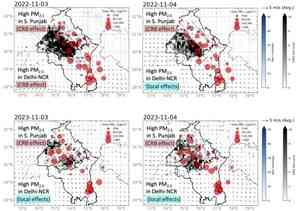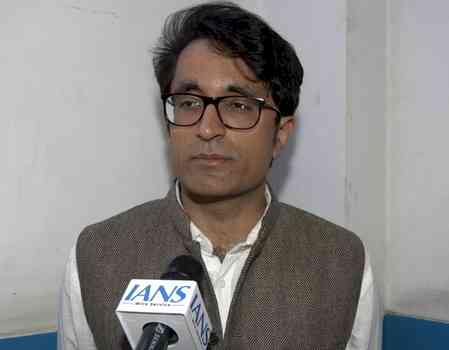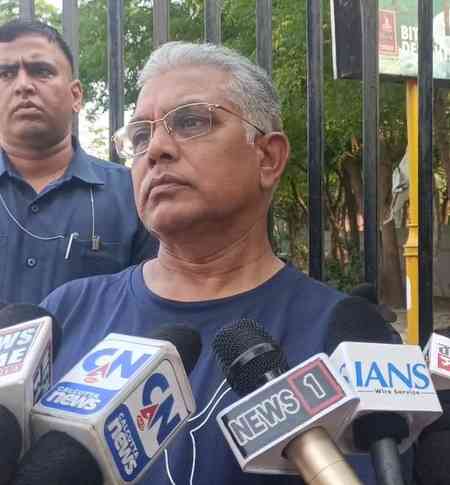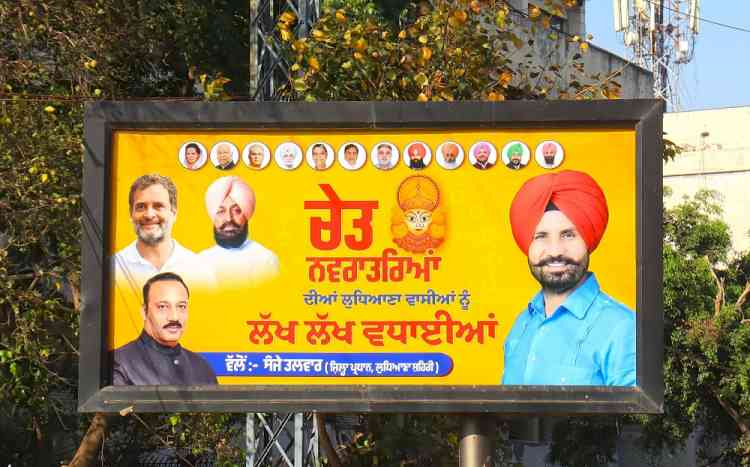Local reasons, not Punjab, Haryana crop fires behind poor air quality in Delhi-NCR: Study
The high PM2.5 levels in Delhi-NCR are largely independent of crop residue burning (CRB) in Punjab and Haryana, and are due to local reasons, claimed a study by researchers from Japan, based on an analysis of observations across a network of 30 sites, on Tuesday.

New Delhi, Feb 4 (IANS) The high PM2.5 levels in Delhi-NCR are largely independent of crop residue burning (CRB) in Punjab and Haryana, and are due to local reasons, claimed a study by researchers from Japan, based on an analysis of observations across a network of 30 sites, on Tuesday.
The study, part of the Aakash Project led by a team from the Research Institute for Humanity and Nature (RIHN) in Kyoto, showed that even during the peak rice stubble burning period (October-November) crop fires are not the reason for poor air quality in the national capital and adjacent areas.
The adverse impacts of air pollution on human health, economic activities, and lifestyle have been a major concern for decades as pollution at an alert level occurs each year during the Oct-Nov months in Delhi-NCR.
Large contributions from the paddy CRB in Punjab and Haryana states of northwest India have been reported as a major reason for this air pollution seen in the national capital and adjacent areas.
“Our study underscores the importance of continuous monitoring of air pollution in both source (Punjab), receptor (Delhi-NCR) and intermediate (Haryana) regions for implementation of targeted mitigation strategies to combat the persistency of harmful air pollution,” said lead author Dr. Poonam Mangaraj, from the institute.
“We have concluded that CRB in Punjab and Haryana cannot be made responsible for determining the air quality in Delhi-NCR, even during the peak rice stubble burning period (Oct-Nov),” said the researchers in the paper published in the journal npj Climate and Atmospheric Science.
In the study, the team installed 30 units of compact and useful PM2.5 in situ instruments with gas sensors (CUPI-Gs) which have continuously recorded air pollutants in 2022 and 2023.
They used a combination of (1) measurements from the low-cost CUPI-G network, (2) analyses of air mass trajectories, fire counts, and wind patterns, and (3) chemistry-transport simulations to assess the impact of CRB on PM2.5 in rural, sub-urban and megacity regions.
The findings highlight that, despite a significant reduction in the satellite fire detection counts (FDCs) over Punjab and Haryana from 2015 to 2023, PM2.5 concentrations in Delhi have remained high.
The PM2.5 concentrations showed large day-to-day fluctuation from site to site in both 2022 and 2023.
Both years saw significant fire counts in southwest Punjab with daily-mean PM2.5 exceeding 300 micrograms per cubic metre of air in Delhi, but the meteorological conditions were markedly different for the peak CRB days of November 1-12 of 2022 and 2023.
November 2022 witnessed a prevalence of northwesterly winds allowing the transport of airmass from Punjab and Haryana to Delhi-NCR on two occasions.
However, in November 2023, a southwesterly low wind condition and limited air movement caused an accumulation of local pollutants in Delhi-NCR.
The analyses showed that the buildup and sustenance of PM2.5 in the Delhi-NCR is primarily of local origin and can be inferred from the rise/drop in concert with the implementation/revocation of the Graded Response Action Plan (GRAP) stages as administered by the Commission of air quality management (CAQM).
“With the measurements at a network of about 30 sites covering Punjab, Haryana, and Delhi NCR, we are able to separate the contributions of paddy straw burning to Delhi’s PM2.5 variations on the basis of characteristic PM2.5 events and at week-monthly averages,” said Prof. Prabir Patra, the leader of Aakash Project and principal scientist at Japan Agency for Marine-Earth Science and Technology (JAMSTEC).
--IANS
rvt/


 IANS
IANS 










